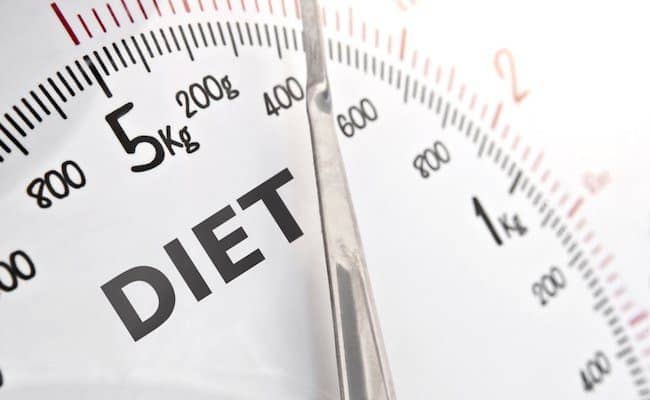
Exercise plays a crucial role in health and is vital for weight control. The American College of Sports Medicine recommends 150 minutes per week of moderate exercise for health benefits. The recommendations for weight loss goals may be different than the recommended health goals.
There are some scientific applications for weight loss, but there are also some guesses we make when estimating exercise for weight loss.
Here are some points to consider when deciding how much exercise is enough for weight loss.
The math: Calories
Some questions to think about when analyzing exercise amount for weight loss include: how much weight are you aiming to lose? What is your desired weight loss rate per week? Most health professionals recommend to aim for 1-2 pounds of weight loss per week.
Another number to add to the “weight loss math equation” is that approximately 1 pound of fat is estimated to equal to 3500 calories. Therefore, if you want to lose 2 pounds per week, you need to expend around 7,000 extra calories (3,500/ pound x 2).
Just looking at the math, if you want to lose 10 pounds in 5 weeks, for a weight loss rate of 2 pounds per week, you need to expend an extra 7,000 calories per week (1,000 calories per day). So, how do you know how many calories you’re burning in your workout?
If you go to a gym or use workout equipment, you can’t always rely for an accurate calorie count from the machine. For the best accuracy, always put in your weight, age and other information before starting the workout. There are many calorie estimates online you could also use to enter in your weight and time spent doing certain activities that can estimate how many calories you are burning.
There are also many fitness applications for electronic devices that can track food and calorie intake along with calories burned during exercise. These can be helpful tools to see how you are tracking with your goals.
Alternative: Skip the Math
Some people enjoy keeping track of the numbers. However, some people would rather skip the meticulous counting all together. One simple thing is true for losing weight: your expenditure (calorie burn) has to be greater than calories you eat.
An alternative way to figuring out how much exercise you need for losing weight can be much simpler than tediously tracking calories in and out. Depending on where your fitness level is, pick an exercise goal to begin at. For example, maybe you want to start at the recommended guideline from the American College of Sports Medicine of 150 minutes per week of moderate intensity.
Weigh yourself before you begin your new exercise goal. Weigh yourself each week at the same day and time. If you notice your weight loss efforts have plateaued, this is a good indication you need to bump up your exercise time. Add on an extra 10-15 minutes per day without increasing your food intake.
This method is very basic, but it can work. Monitoring your weight and adjusting your exercise is important for weight loss. As you lose weight, you actually will need to do MORE exercise to burn greater amount of calories.
Type of Exercise
Moderate exercise can be described as an intensity of about a 6.5-7 on a scale from 1-10. One is lying on the couch not doing anything, 10 would be considered you’re at your max effort. Guidelines often recommend moderate exercise for health benefits, or doing vigorous exercise, which is around an 8-8.5 on the scale, for a shorter duration.
Examples of moderate exercise include brisk walking, bike riding, dancing, easy jogging, etc. Examples of vigorous exercise include jogging, riding bike uphill, swimming, etc. Moderate exercise you can carry on a conversation, but vigorous exercise you don’t want to talk that much.
To get the maximum benefit from exercise for weight loss, a combination of moderate and vigorous exercise may be best. Moderate exercise teaches muscles to burn fat efficiently, but vigorous exercise burns a greater number of calories.
Switching up the intensities of your workouts may be also be key if you hit a plateau in your weight loss journey. Adding in resistance training can also be beneficial for weight loss and health goals.
The American College of Sports Medicine recommends 2-3 days per week for resistance training. Resistance training can help build muscle growth and add extra calorie burn.
Food Intake
Controlling food intake while exercising is vital for success with weight loss. If you are exercising 1-2 hours a day but matching your calorie expenditure with food, weight loss is going to be virtually nonexistent. For more help with exercise, nutrition and weight loss goals, talk with a dietitian or health fitness professional.
Caution
If you have heart problems, bone/joint issues, on blood pressure medication or have pain in your chest when exercising, talk with a physician before exercising. Don’t start an exercise program that will injure you and therefore stopping your exercise progress.
Keep your exercise goals for the long term not just for a weight loss number.
Conclusion
In conclusion, the biggest thing to remember when exercising for weight loss is it is about increasing calorie burn over calorie intake. Knowing the amount of calories you are burning for exercise and the required duration can be helpful in reaching your weight loss goals.
However, simply monitoring your weight and adjusting your exercise may also work. For more in depth help with exercise and weight loss, consult a health fitness professional. Varying exercise intensities and adding resistance training can also benefit weight loss goals.
References used in this article










